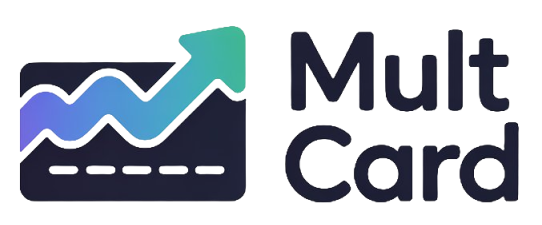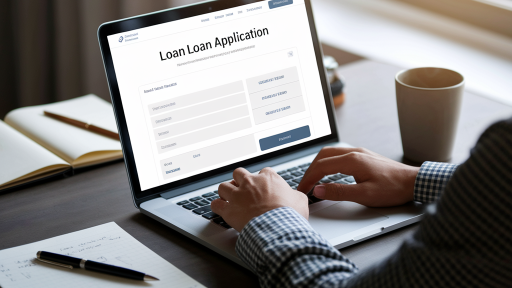In today’s fast-paced digital world, the need for quick and accessible financing has led to a surge in online lending. Gone are the days of lengthy bank queues and mountains of paperwork; now, securing a loan can often be done from the comfort of your own home with just a few clicks. This convenience has opened up financial opportunities for many.
However, navigating the online loan market can feel daunting. With countless lenders and various loan types, knowing where to start is crucial. This comprehensive guide will demystify the process, breaking it down into manageable steps to help you apply for an online loan confidently and securely, ensuring you find the best possible option for your financial situation.
Before You Apply: The Essential Preparation Phase
Jumping into an application without proper preparation is a common mistake. Taking the time to get your financial house in order first not only increases your chances of approval but also ensures you’re borrowing responsibly. This foundational phase is the most important part of the entire process.
Understand Your Financial Needs
The first question to ask yourself isn’t “Where can I get a loan?” but “Why do I need this loan?”. Clearly defining the purpose will help you determine the exact amount you need to borrow. Are you consolidating high-interest debt, covering an unexpected medical expense, or funding a home renovation? Be specific. Avoid the temptation to borrow more than you absolutely need, as every extra dollar will accrue interest, increasing the total cost of your loan.
Check Your Credit Score and Report
Your credit score is a three-digit number that provides lenders with a snapshot of your creditworthiness. A higher score generally translates to better loan offers with lower interest rates. Before you start shopping for lenders, it’s vital to know where you stand. You are entitled to a free copy of your credit report from each of the three major credit bureaus (Equifax, Experian, and TransUnion) once every year.
Review your report carefully for any errors or inaccuracies that could be negatively impacting your score. If you find any, dispute them immediately. Understanding your credit profile helps you manage expectations and target lenders who are more likely to approve your application.
Gather Your Necessary Documents
Online lenders still need to verify your identity and financial information. Having all your documents digitized and ready to upload will significantly speed up the application process. While requirements can vary slightly between lenders, you will most likely need the following:
- Proof of Identity: A government-issued ID, such as a driver’s license, passport, or state ID card.
- Proof of Income: Recent pay stubs, W-2 forms, tax returns, or bank statements showing regular deposits.
- Proof of Address: A recent utility bill, lease agreement, or bank statement with your name and current address.
- Bank Account Information: Your bank’s name, account number, and routing number for fund disbursement and repayments.
- Social Security Number: For identity verification and credit checks.
The Step-by-Step Application Process
Once your preparation is complete, you’re ready to begin the application itself. Following these steps methodically will help you navigate the process smoothly and find the most suitable loan for your needs.
Step 1: Research and Compare Lenders
Do not accept the first loan offer you see. The online lending market is competitive, which works in your favor. Take time to research and compare several lenders to find the best terms. Focus on these key factors:
| Factor to Compare | What to Look For |
|---|---|
| Annual Percentage Rate (APR) | This is the total cost of borrowing, including the interest rate and any fees. It’s the most accurate measure for comparing loans. Aim for the lowest APR possible. |
| Loan Term | This is the length of time you have to repay the loan. A shorter term means higher monthly payments but less interest paid overall. A longer term means lower monthly payments but more interest paid over the life of the loan. |
| Fees | Look for origination fees (a percentage of the loan amount), late payment fees, and prepayment penalties (a fee for paying the loan off early). |
| Customer Reviews | Check independent review sites to see what other borrowers have to say about their experience with the lender’s customer service and transparency. |
Step 2: Get Pre-Qualified
Many online lenders offer a pre-qualification process. This is a preliminary step where you provide basic financial information, and the lender gives you an estimate of the loan amount and interest rate you might qualify for. The best part is that pre-qualification typically only requires a “soft” credit check, which does not affect your credit score. This allows you to shop around and compare potential offers from multiple lenders without any negative impact on your credit profile.
Step 3: Complete the Full Application Form
After choosing a lender based on your pre-qualified offers, it’s time to submit the official application. This form will be more detailed, asking for in-depth information about your identity, employment, income, and existing debts. It is absolutely crucial to provide accurate and truthful information. Any discrepancies can lead to delays or outright rejection of your application.
Step 4: Upload Your Documents
This is where your preparation pays off. You’ll be prompted to upload the documents you gathered earlier. Most lenders have a secure online portal for this purpose. Ensure your document scans or photos are clear and legible to avoid any processing delays. Follow the lender’s instructions carefully regarding file formats (e.g., PDF, JPG).
Step 5: Review and Sign the Loan Agreement
If your application is approved, you will receive a formal loan agreement. This is the most critical document in the entire process. Read it carefully from start to finish before signing. Do not skim. Verify that the final terms match the offer you were quoted. Pay close attention to the final APR, the total repayment amount, the monthly payment schedule, and any clauses related to fees or penalties. If anything is unclear, contact the lender for clarification before you electronically sign.
After You Apply: What Happens Next?
Once you’ve signed the agreement, the process is nearly complete. Here’s what you can expect in the final stages.
The Approval and Verification Process
Even after signing, the lender will conduct a final verification. They might contact your employer to confirm your job status or perform a final review of your documents. This is typically a quick process, often completed within one business day.
Receiving Your Funds
Upon final approval, the lender will disburse the loan funds. The most common method is a direct deposit into the bank account you provided. The speed of funding is a major advantage of online loans, with many lenders depositing the money within 1-2 business days, and some even on the same day.
Managing Your Loan Repayments
Your responsibility doesn’t end when you receive the money. It’s essential to manage your repayments effectively. The best practice is to set up automatic payments from your bank account. This ensures you never miss a payment, which helps build a positive credit history and avoids costly late fees. For a deeper understanding of interest rates, you can explore detailed resources explaining how Annual Percentage Rate (APR) works.
Common Mistakes to Avoid When Applying for a Loan Online
Navigating the online loan application process can be tricky. Here are some common pitfalls to steer clear of:
- Not Reading the Fine Print: Rushing through the loan agreement can lead you to accept unfavorable terms or hidden fees.
- Applying Everywhere at Once: While comparing is good, submitting multiple full applications in a short period can result in several “hard” credit inquiries, which can lower your credit score. Stick to pre-qualifications first.
- Borrowing More Than You Can Afford: Overextending yourself can lead to a cycle of debt. Use a loan calculator to ensure the monthly payments fit comfortably within your budget.
- Ignoring the Total Cost: Focusing only on the monthly payment can be misleading. Always consider the APR and the total amount you will repay over the loan’s lifetime.
- Using an Unsecured Network: Always use a secure, private Wi-Fi network when submitting personal and financial information to protect yourself from identity theft. The FTC offers tips on protecting your privacy online.
Frequently Asked Questions (FAQ)
How long does it take to get an online loan?
The timeline can be very fast. The application itself might only take a few minutes. Approval can range from instant to a couple of business days, and funding is often completed within 1-3 business days after approval.
Can I get an online loan with bad credit?
Yes, it is possible. Many online lenders specialize in lending to individuals with less-than-perfect credit. However, you should expect to pay a higher APR compared to someone with a strong credit score. Understanding your credit score is the first step in this journey.
Are online loans safe?
Reputable online lenders use robust security measures to protect your data. To ensure safety, always verify that the lender’s website URL begins with “https://” (the “s” stands for secure) and look for a padlock icon in the address bar. Stick to well-known, established lenders with positive reviews.
Applying for an online loan can be a straightforward and effective way to meet your financial goals when approached with diligence and care. The key is thorough preparation, careful comparison of your options, and a complete understanding of the terms you are agreeing to. By following these steps, you empower yourself to make a sound financial decision.
For more detailed guidance and to understand your rights as a borrower, you can review this official resource on how to apply for an online loan from the Consumer Financial Protection Bureau.




